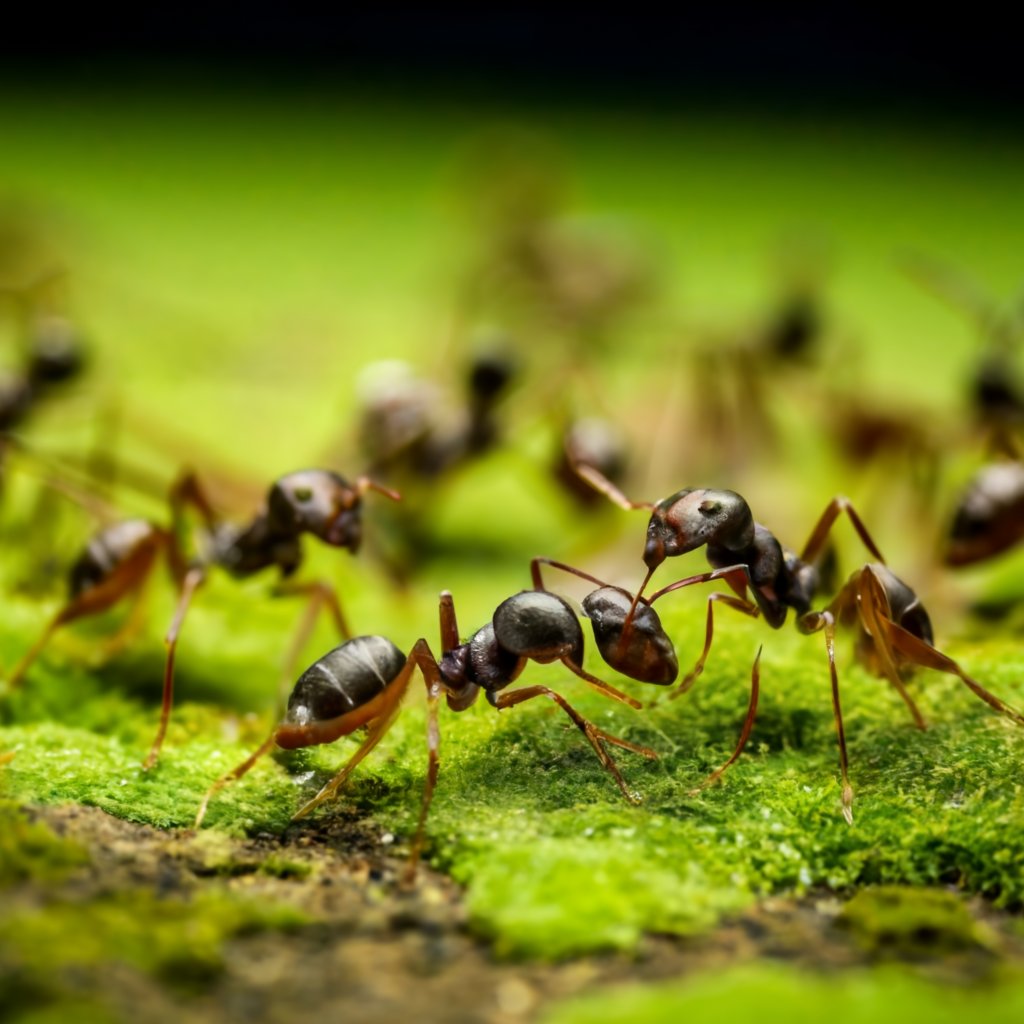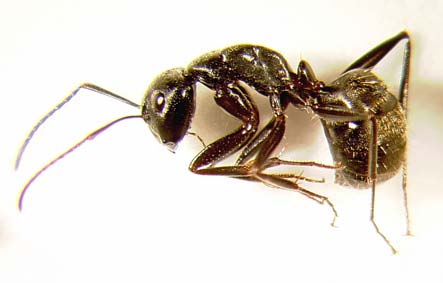
Those tiny, persistent ants marching across your kitchen counter can quickly turn a sweet treat into a scene of frustration. But before you grab the chemical spray, consider some natural, eco-friendly solutions to send these six-legged squatters packing. This guide will equip you with a battle plan to outsmart these clever creatures and reclaim your home, ant-free!
This post may have affiliate links. This means that sometimes when you click a link on our site and make a purchase on Amazon, we may earn a small commission at no additional cost to you. We only recommend products we truly believe in, and your support helps keep us running!
Understanding the Enemy: Why Do We See Ants Indoors?
Ants are social insects with a complex hierarchy and a strong work ethic. They venture indoors for two main reasons: food and shelter. Crumbs, spills, and even pet food can be a smorgasbord for them. Additionally, cracks in walls, foundations, or near pipes can provide a cozy hideaway, especially during harsh weather.
Identifying the Ant Invaders:
There are over 12,000 known ant species, but some common household invaders include:
Pavement Ants

These dark brown or black ants are attracted to sugary substances.
Odorous House Ants

These small, reddish-brown ants emit a faint, unpleasant odor when crushed.
Carpenter Ants

These large, black ants can inflict structural damage by tunneling through wood.
Knowing the type of ant can help you tailor your approach, but most natural methods work for a variety of species.
The All-Natural Ant Arsenal: Repelling and Eradicating Pesky Pests
Forget harsh chemicals! Here’s your arsenal of natural weapons to combat the ant intrusion:
Disrupting the Ant Highway:
- Seal the Entry Points: Ants are tiny Houdinis, but a little detective work can reveal their entry points. Look for cracks in walls, around pipes, or near windows. Seal these openings with caulk or weather stripping.
- Create a Natural Barrier: Sprinkle lines of cinnamon, cayenne pepper, or diatomaceous earth (a natural powder made from fossilized algae) around potential entry points. These act as deterrents due to their scent or abrasive texture.
Targeting the Ant Pantry:
- Cleanliness is Key: Leaving no crumbs or spills is crucial. Wipe down counters, sweep floors regularly, and store food in airtight containers. Don’t forget to clean under appliances and around pet food bowls.
- The Vinegar Offensive: A 50/50 white vinegar and water solution is a natural disinfectant and ant repellent. Spray or wipe down surfaces ants frequent.
The Bait and Trap:
- The Borax Buffet: Mix equal parts borax (a laundry booster found in most grocery stores) and sugar. Place the mixture on a shallow dish in areas where you see ant activity. The ants will take the bait back to the colony, ultimately eliminating the queen and the entire nest. Caution: Borax can be harmful to children and pets, so ensure the bait is placed in a safe, inaccessible location.
- The Yeast Trap: Combine equal parts sugar and active dry yeast with a little water to create a thick paste. Spread the paste on cardboard and place it near ant trails. The yeast ferments, attracting the ants, and ultimately traps them.
The Bait and Trap:
- Aromatherapy Ants Don’t Appreciate: Essential oils like peppermint, clove, or citrus can be effective repellents. Caution: Essential oils can be concentrated and irritate skin and eyes. Dilute a few drops of the chosen oil with water in a spray bottle and mist entry points or ant trails. Be sure to keep essential oils out of reach of children and pets.
Beneficial Bug Brigade:
- Enlisting Nature’s Allies: Ladybugs and lacewings are natural predators of ants. Consider introducing these beneficial insects to your garden to help keep ant populations in check outdoors.
Preventing a Future Ant Invasion: Maintaining a Pest-Free Home
- Regularly Empty Trash Cans: Don’t let overflowing trash bins become a breeding ground for ants.
- Fix Leaky Faucets: Moisture attracts ants, so address any leaky pipes or faucets promptly.
- Store Pet Food Properly: Keep pet food in airtight containers to avoid attracting unwanted guests.
- Trim Overgrown Shrubs: Ants can use overgrown vegetation near your home as a highway. Keep shrubs and trees trimmed back from the foundation.
Living in Harmony with Nature: A Final Word
While ants can be a nuisance, they play a vital role in the ecosystem. By implementing these natural methods, you can effectively deter them from your home without harming the environment. Remember, consistency is key! With a little patience and these natural solutions, you can reclaim your kitchen counter and enjoy a peaceful coexistence with
Beyond the Kitchen Counter: Conquering Ants in Other Areas
Our battle plan against the tiny trespassers extends beyond the kitchen. Here are some tips for tackling ant invasions in specific areas of your home:
- The Bathroom Battleground: Moisture from leaky faucets or condensation can attract ants. Ensure proper ventilation in bathrooms and address any leaks promptly. Regularly clean drains and around toilets to remove potential food sources.
- Bedroom Blitz: Ants might be drawn to crumbs or forgotten snacks that have lodged themselves under beds or in furniture crevices. Vacuum floors regularly, paying close attention to corners and edges. Consider placing ant traps discreetly under furniture legs, but ensure they are out of reach of children and pets.
- Conquering the Cardboard Cavern: Cardboard boxes used for storage can become cozy ant havens. If you suspect an infestation in stored items, unpack the boxes and inspect the contents for ant trails or nests. Consider using plastic containers for long-term storage instead of cardboard.
- Yard Patrol: Ants often build nests outdoors near your home’s foundation. Boiling water can be an effective way to eradicate visible ant nests, but be cautious not to damage nearby plants. Diatomaceous earth can also be sprinkled around the perimeter of your home to create a barrier against incoming ants.
When to Call in the Professionals
While these natural methods are highly effective for most situations, there may be instances where professional help is necessary. Here are some signs it’s time to call in the reinforcements:
- The Pharaoh Ant Phalanx: These light yellow or brown ants are particularly difficult to eradicate due to their complex nesting habits. Professional pest control companies have the expertise and specialized treatments to tackle these stubborn invaders.
- The Carpenter Ant Catastrophe: Carpenter ants can cause significant structural damage. If you suspect a carpenter ant infestation, don’t delay and call a professional to assess the situation and implement a targeted treatment plan.
- The Allergic Ant Attack: For individuals with ant allergies, even a small infestation can trigger a reaction. If you experience allergic reactions after encountering ants, it’s best to leave the elimination to a professional pest control service.
Living in harmony with nature doesn’t mean surrendering your home to unwanted guests. By understanding ant behavior, implementing these natural solutions, and knowing when to seek professional help, you can reclaim your space and enjoy a pest-free environment. So, grab your natural ingredients, equip yourself with the knowledge in this guide, and say goodbye to those pesky ant squatters for good!
